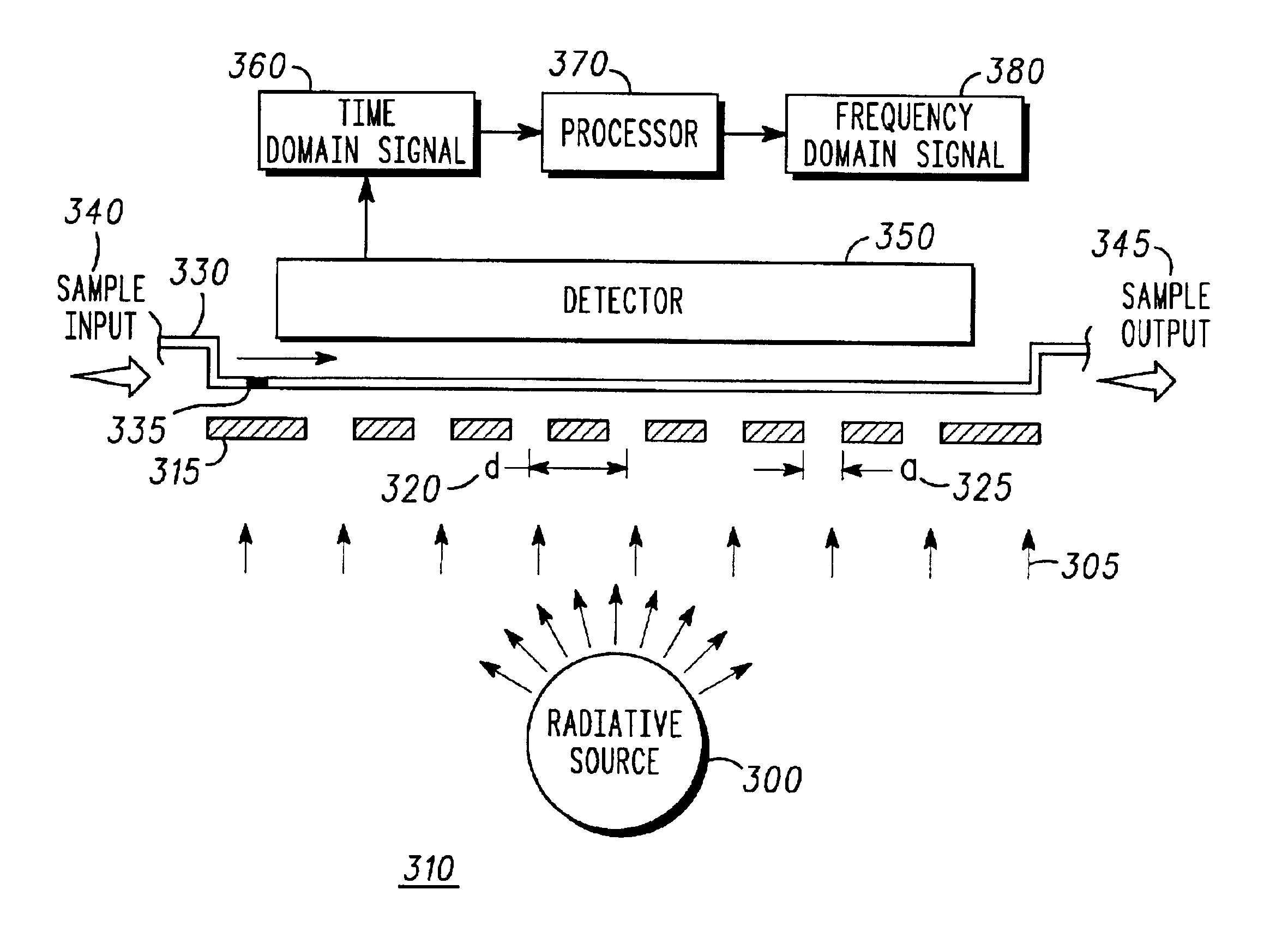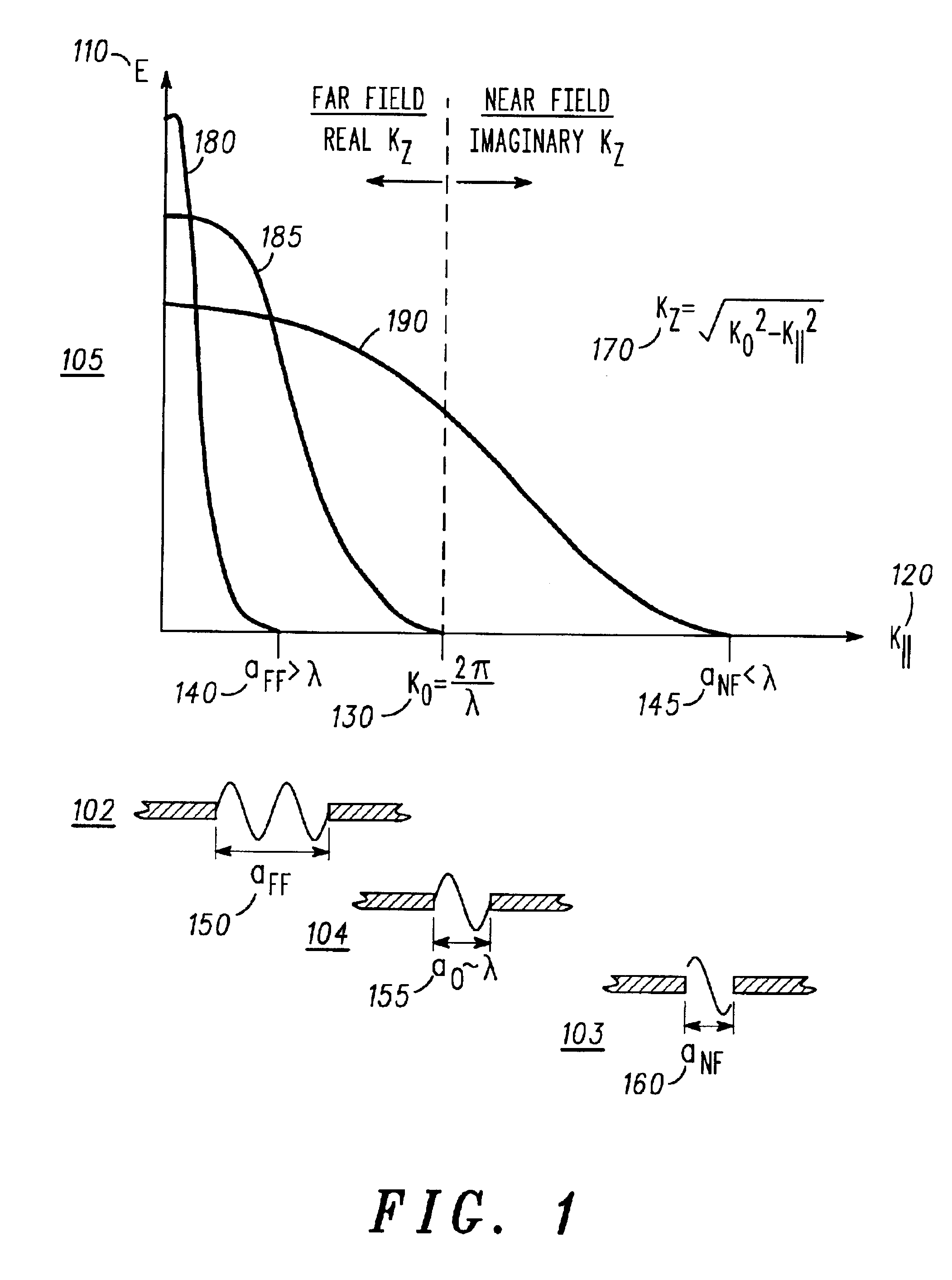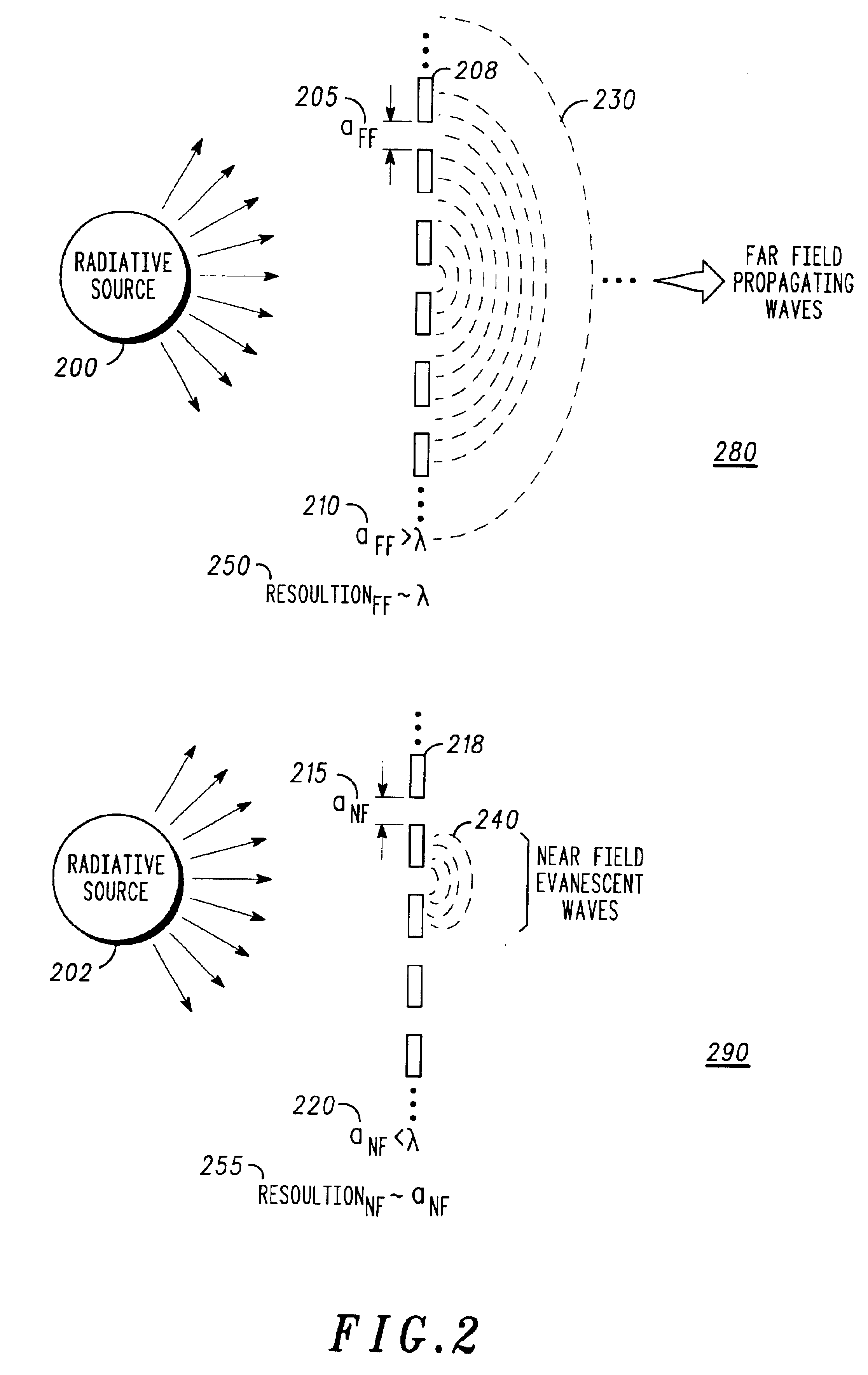Near-field transform spectroscopy
a near-field transform and spectroscopy technology, applied in the field of chromatography, can solve the problems of inability to demonstrate sub-wavelength imaging using nf light, inability to achieve spectroscopic resolution enhancement, the effect of improving the signal-to-nois
- Summary
- Abstract
- Description
- Claims
- Application Information
AI Technical Summary
Benefits of technology
Problems solved by technology
Method used
Image
Examples
Embodiment Construction
The following descriptions are of exemplary embodiments of the invention and the inventors' conceptions of the best mode and are not intended to limit the scope, applicability or configuration of the invention in any way. Rather, the following description is intended to provide convenient illustrations for implementing various embodiments of the invention. As will become apparent, changes may be made in the function and / or arrangement of any of the elements described in the disclosed exemplary embodiments without departing from the spirit and scope of the invention.
Various representative implementations of the present invention may be applied to any system and / or method for NF measurement and / or de-convolution of sub-diffraction-limited scale phenomena. Certain representative implementations may include, for example: the improvement of S / N in a NF detection or imaging system; the improvement of sample-throughput in a NF separation, excitation and / or detection system; and single mole...
PUM
 Login to View More
Login to View More Abstract
Description
Claims
Application Information
 Login to View More
Login to View More - R&D
- Intellectual Property
- Life Sciences
- Materials
- Tech Scout
- Unparalleled Data Quality
- Higher Quality Content
- 60% Fewer Hallucinations
Browse by: Latest US Patents, China's latest patents, Technical Efficacy Thesaurus, Application Domain, Technology Topic, Popular Technical Reports.
© 2025 PatSnap. All rights reserved.Legal|Privacy policy|Modern Slavery Act Transparency Statement|Sitemap|About US| Contact US: help@patsnap.com



